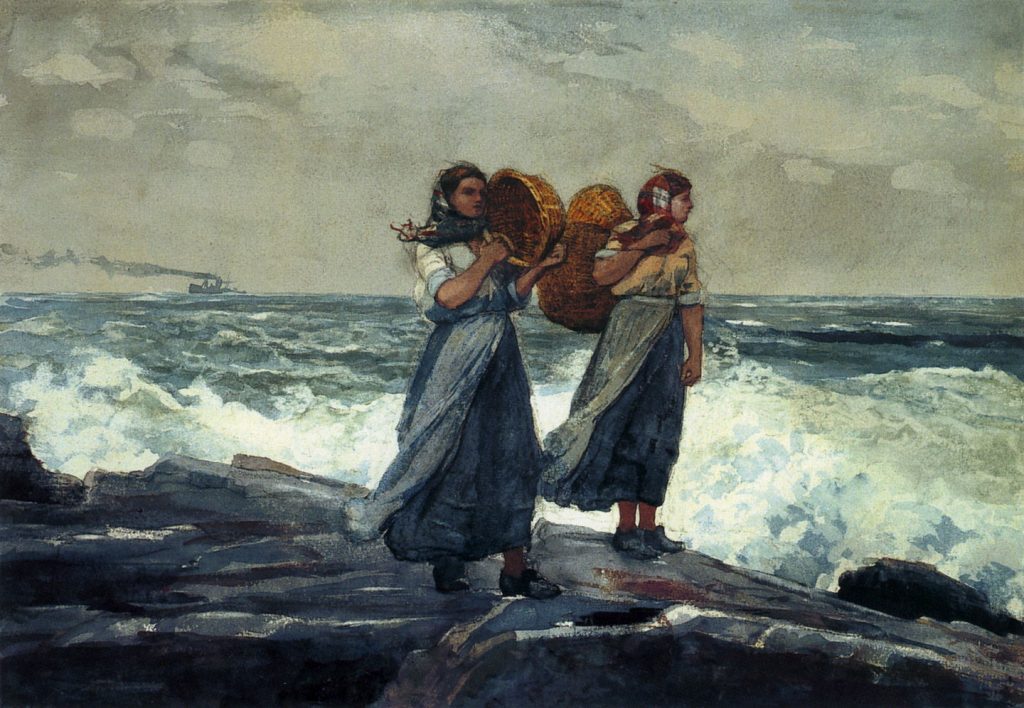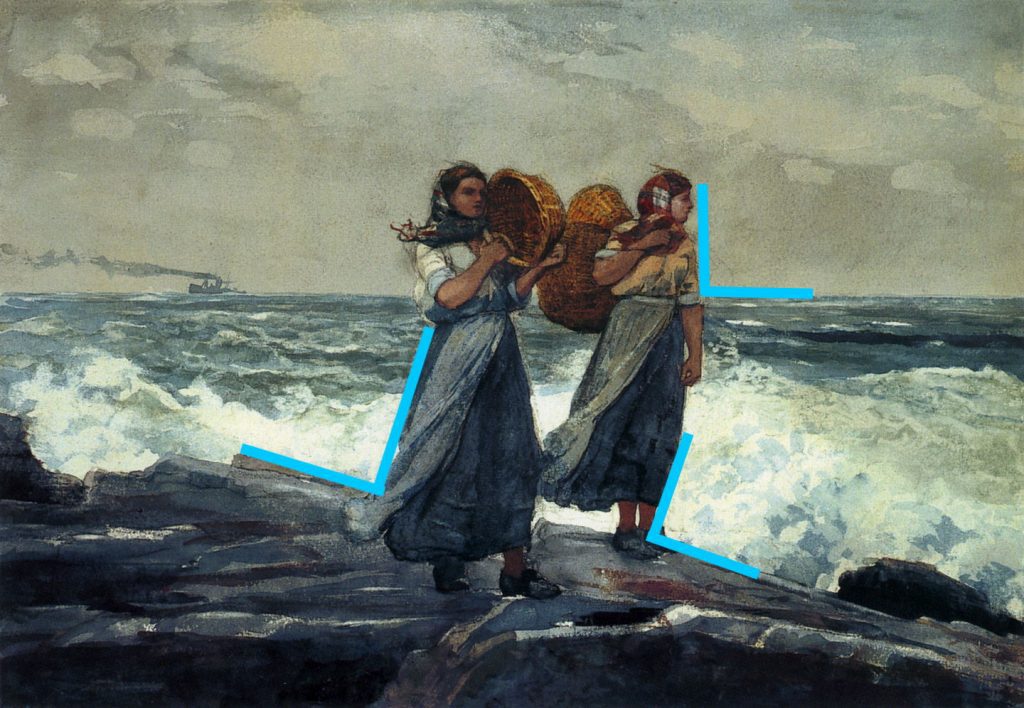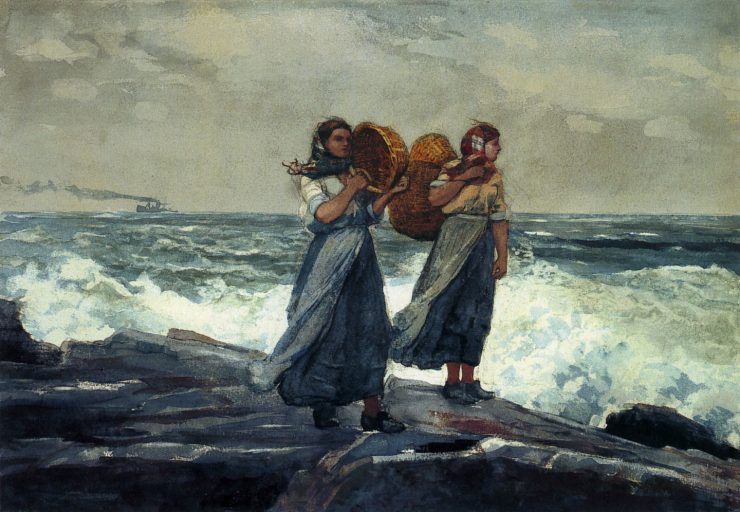No matter how long you have been painting, it it’s always best to remember the basics. Sometimes you forget the principles, either because you are just learning and still figuring out exactly what to do, or you are an experienced artist and aren’t giving it much thought.
Using right angles is the most basic of concepts, and yet it has one of the greatest impacts on the look of your painting. Varying the angle of your stroke will give you slightly different effects.
To strengthen your painting composition, look for opportunities to:
- have two lines meet at right angles that are parallel with the picture frame
- look for right angles that are inclined or oblique to strengthen the painting more subtly.
Parallel Right Angles
When you have two lines meet at right angles to the canvas, it forms a severe harmony in the picture.
An easy way to add right angles is something in the landscape such as the masts of ships as vertical right angles to the horizon line, or the vertical sides of buildings.
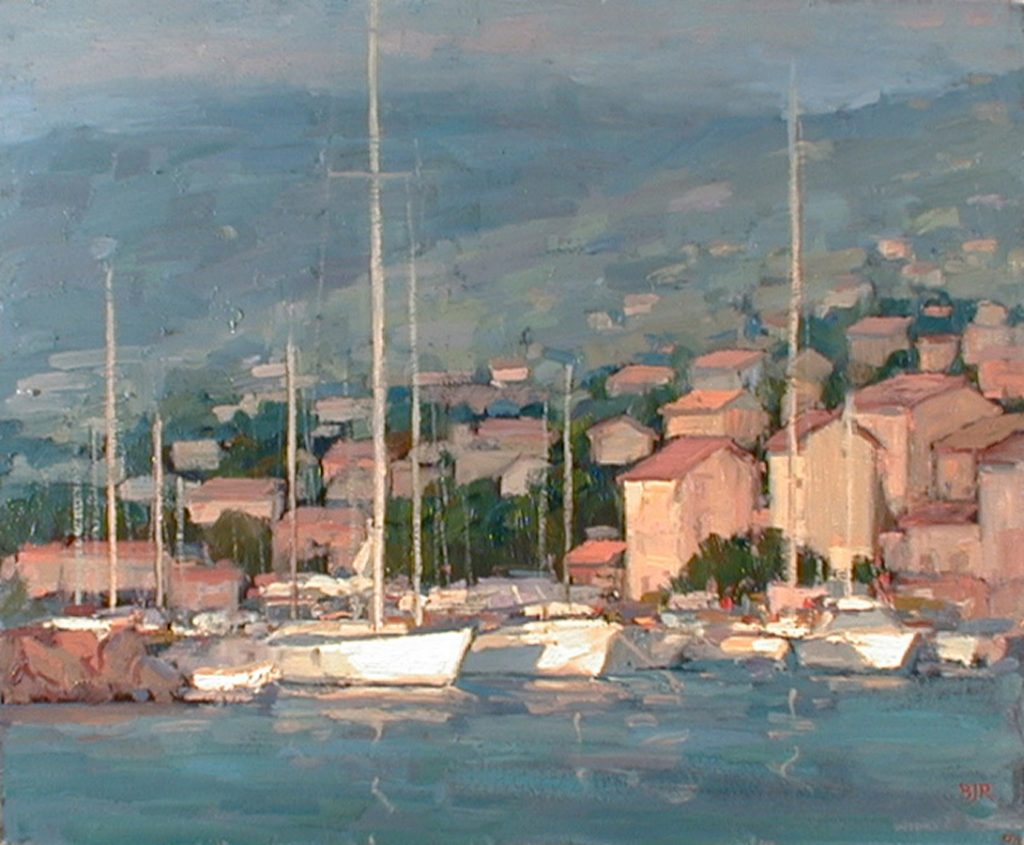
Look at Old Master paintings to see how they incorporated right angles to create powerful compositions, such as this one by Alexandre Cabanel that portrays the figure of Lucifer as a fallen angle, shown as a nude handsome young man. Look how his arms and legs are painted horizontally, and his body is vertical to them, emphasizing his fall from grace.
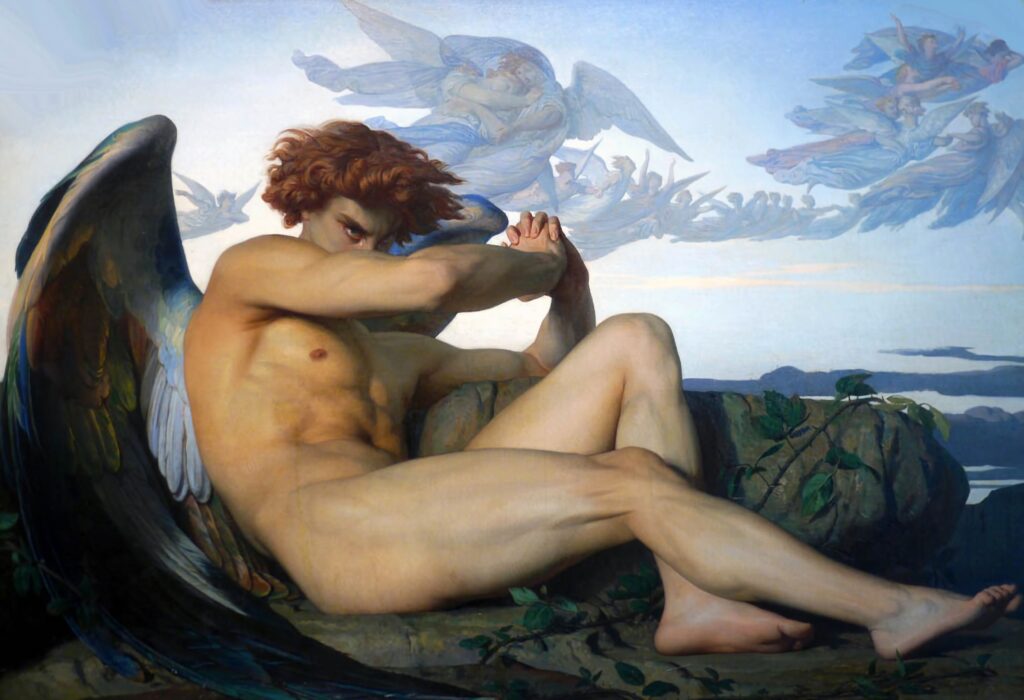
Inclined Right Angles
This example of the principle of right angles is in a painting by Arthur Streeton. In this case, the horizon is slanted to create a different composition. He carefully angles the tree to be at right angles to the position at which it crosses the top edge of the field, which is on the side of a hill.
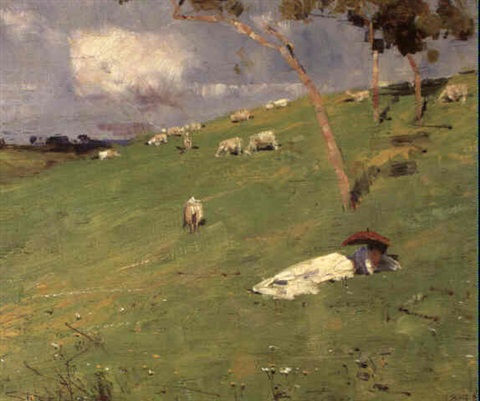
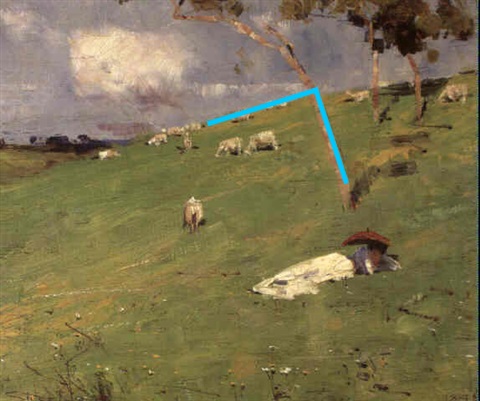
Here is another example of the compositional principle of inclined right angles in a seascape by Winslow Homer. He angles the dress of the figures to be at right angles to the slanting rocks. He also lets the figure cross the horizon of the sea to create another right angle.
